Chalk writing is a basic skill that teachers must master. Writing on the blackboard is essential in class every day. The teacher has developed beautiful chalk calligraphy and writing on the blackboard is pleasing to the eye, and the students will be affected subtly.
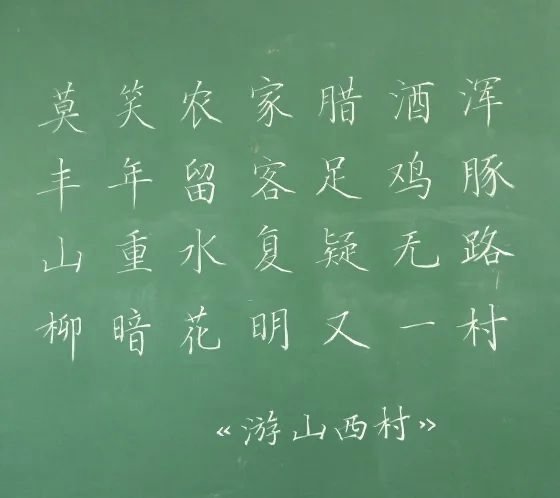
The best teaching is demonstration. Many teachers want to practice calligraphy but have no idea where to start. If you practice according to the following steps and essentials, you will definitely be able to develop beautiful chalk calligraphy.
1. Brushwork
1. How to use chalk
Pen-holding posture (three-finger pen-holding method): First, use your thumb and index finger to hold the pen holder firmly, about one centimeter away from the pen tip. Place the pen holder at the first joint of the middle finger. The ring finger and little finger naturally bend against the middle finger to play a supporting role. , the palm is empty, the finger is real and the palm is empty.
The angle between the chalk pen body and the board surface is 45 degrees. If it is too small, the lines will be weak, and if the stroke is too large, the details of the strokes will not be easily reflected. Do not place the chalk perpendicular to the blackboard.
Pen-handling postures: cutting, throwing, and waving the arms. The arm waving is like the action when erasing a blackboard.
When practicing cutting and throwing movements, pay attention to arm movements, press your wrists, keep the range of movements small, and avoid excessive intensity.
2. Practice of basic strokes
Each Chinese character is composed of basic strokes such as horizontal, vertical, apostrophe, na, and dot. If you want to practice calligraphy well, you must start with basic strokes. The eight ways of writing Yongzi (dot, horizontal, vertical, left, back, peck, lift, and hook) summarize the basic writing techniques of Chinese characters.
Pay attention to the "start, line, and end" of each stroke. Why does one stroke require so much? If you don't do this, it will all be written as a small stick, without any aesthetic feeling.
When you start writing, you should cut it diagonally from the air like chopping vegetables.
To draw a pen, then wave your arm horizontally, pull, vertically, pull, and push diagonally. The whole arm drives the chalk to draw a pen. Don't just move your wrist.
Stop the pen and write to the end, still like chopping vegetables. If you need to write a sharp effect such as skimming, pressing, hanging needle vertically, hooking, etc., you need to quickly wave your arm in the stroke to finish.
In the beginning, if you practice your strokes well, you will never stop making progress in the future.
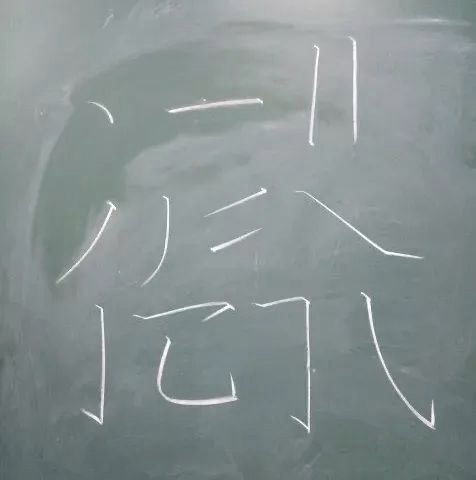
3. Practice of compound strokes
Compound strokes are composed of two or more basic strokes. When writing, the principle is the same as the basic strokes.
It's just a combination of a few basic strokes. The chalk can't leave the blackboard during the whole process. The closing of one stroke and the cutting of the next stroke are connected together, and the strokes continue.
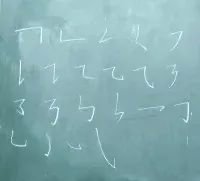
2. Calligraphy
1. Practice of characters composed of basic strokes and compound strokes.
This step is the application and improvement of penmanship learning. When writing, you must ensure that the stroke order is correct, the strokes are in place, and the structure is beautiful.
Writing according to the stroke order is convenient for writing, easy to write well, and can speed up writing. The strokes of the characters are interspersed and avoided, and the length and angle are particular. All things are balanced, yin and yang are in opposition, and harmonious and unified.
The structure of Chinese characters has certain rules, and the length, height, and position of the strokes are all related to a certain extent. If they are disrupted, the writing will naturally not look good. If you want to write chalk calligraphy well, you must observe the structure and make breakthroughs one by one, so that you can master the rules of calligraphy.
Every time, observe carefully before writing, so that you have the words in mind and write before writing. After writing it once, compare it with the model words to see where there are similarities that have not been written.
Then do the second copywriting, especially work on the similar places that you didn’t write the first time. Until the writing is relatively similar, repeat and consolidate it a few times.
For example: the first, third, and fourth characters of the character "六" are drawn in an equilateral triangle arrangement. When writing, you have the triangle in mind, and the strokes can be written in the correct position. "Six, Yong, Yi, Wen", the first stroke is a dot. This dot must be centered. If the position of the upper dot is written correctly, the subsequent structure will be much easier.
The character "十" is divided into two sections vertically, and the upper section is shorter than the lower section. A horizontal line is divided into two sections vertically, either the left and right sides are equal, or the left end is shorter and the right end is longer. The reverse extension line of the character "eight" intersects with the initial stroke of "捺". The angle between the characters "人" is approximately 90 degrees, that is, they intersect perpendicularly...

2. Practice the same radicals.
Chinese characters are square, so be careful not to write them in a rectangular shape. The frame structure of each character has rules to follow. Most characters with a left-right structure are narrow on the left and wide on the right. Characters with a top-down structure are generally tight at the top and loose at the bottom. The characters that are semi-enclosed or fully enclosed should not be too large inside.
For example, the characters next to the word "verb" are narrow on the left and wide on the right. The dot next to the word "verb" should be written on the upper right side of the horizontal line, opposite to "ti". Many times, we like to write the dot directly above the horizontal line.
Next to the word ox, next to the word hen, next to the word wood, next to the handle, next to the word soil, etc., the strokes that extend beyond the right end of the vertical line should be closed on the same line parallel to the vertical line.
The vertical middle part where the center of gravity of the Chinese character is located should be compact and do not leave too much blank space. The ability to control structure cannot be solved in a short while, it requires repeated practice and edification.
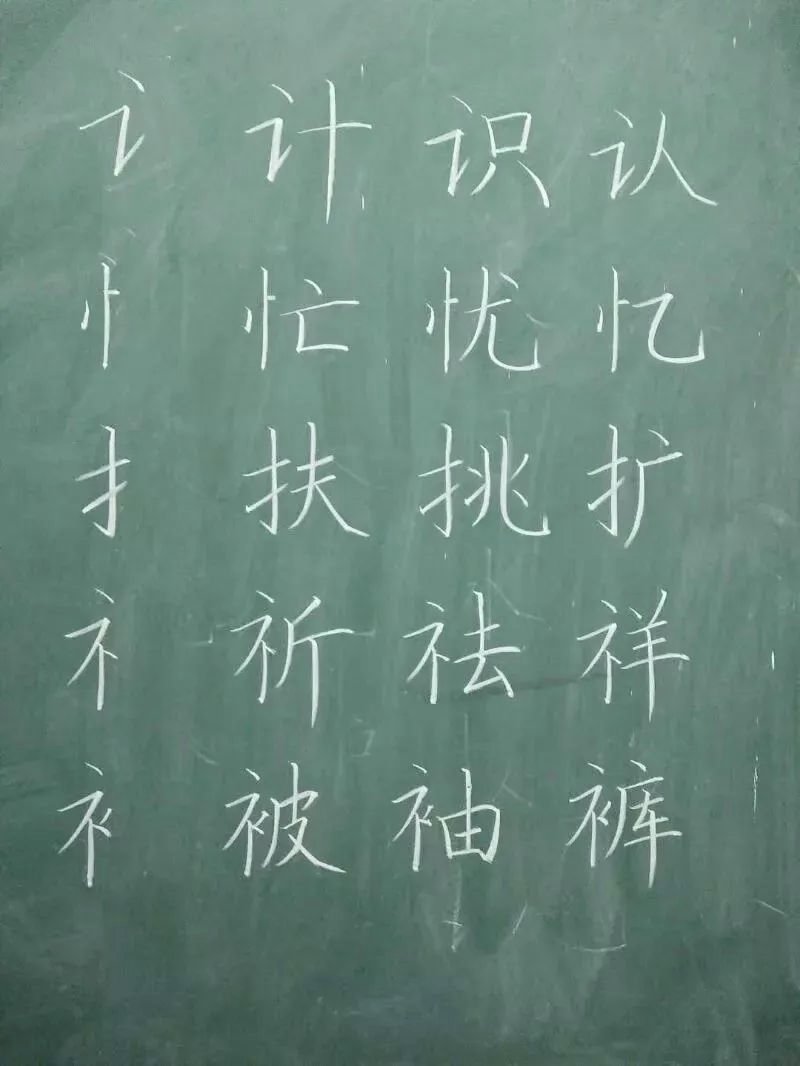
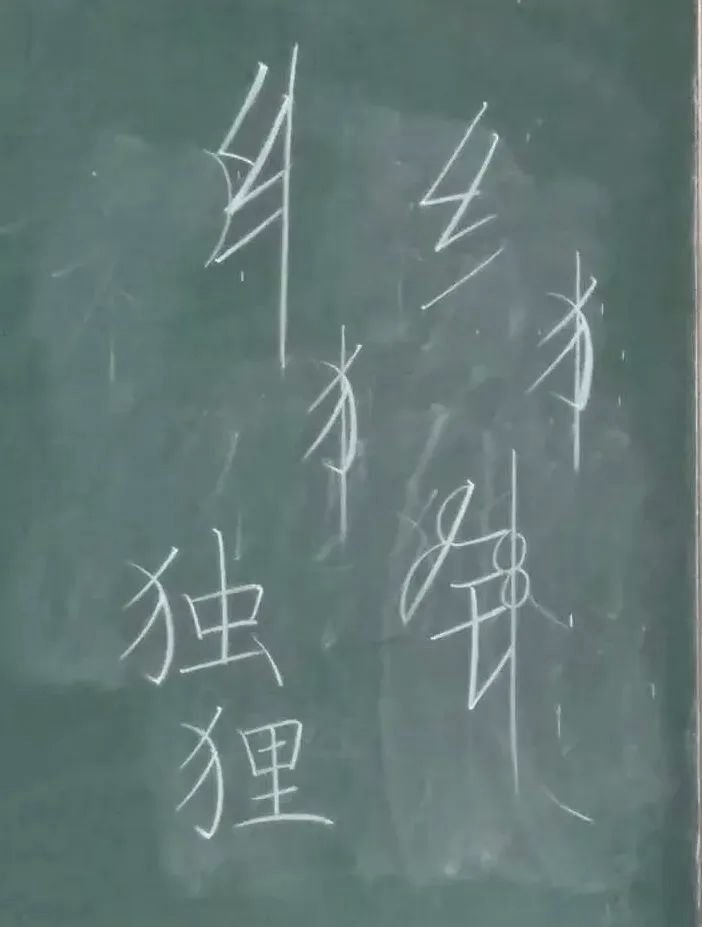
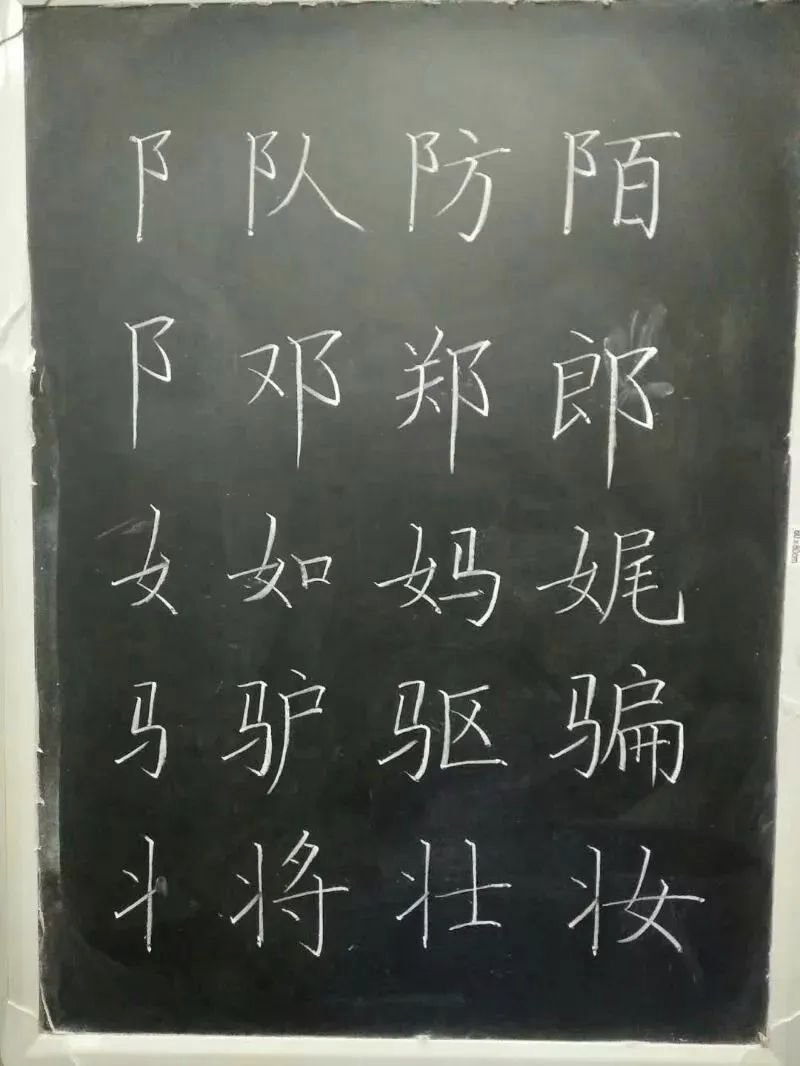
3. Rules and regulations
What are rules and regulations? Composition refers to the method of arranging and arranging the echoes and relationships between words and lines and lines in the entire work. That is, the "white cloth" of the entire work. Also known as "big chapter method". It is also customary to call the arrangement of dots within a character and the relationship between the arrangement of a character and the numbers "small composition".
The following focuses on the spacing between words, line spacing and the position of the entire word on the blackboard.
1. Four-character practice
After practicing a single character for a period of time, you can practice four characters. When practicing the Four Characters, you must pay attention to the rules. The space should be moderate, the entire text should not be too full on the entire board, nor should it be too empty, and the position should be centered.
There should be three-quarters of a word space between words and on both sides. The line spacing should be adjusted according to the position of the board, about one word position. The spacing of the characters should be uniform, and the sizes of the characters should be nearly uniform, so that characters with more strokes should be compact and characters with few strokes should be open.
Arrange horizontally and vertically, with the center point of each character on a line. During the writing process, pay attention to the up, down, left, and right to determine the approximate position of the character.
Before writing, you must visually check the position of the characters and try to get them right in one go. When writing, take into account the composition, calligraphy, and penmanship to achieve your best level.
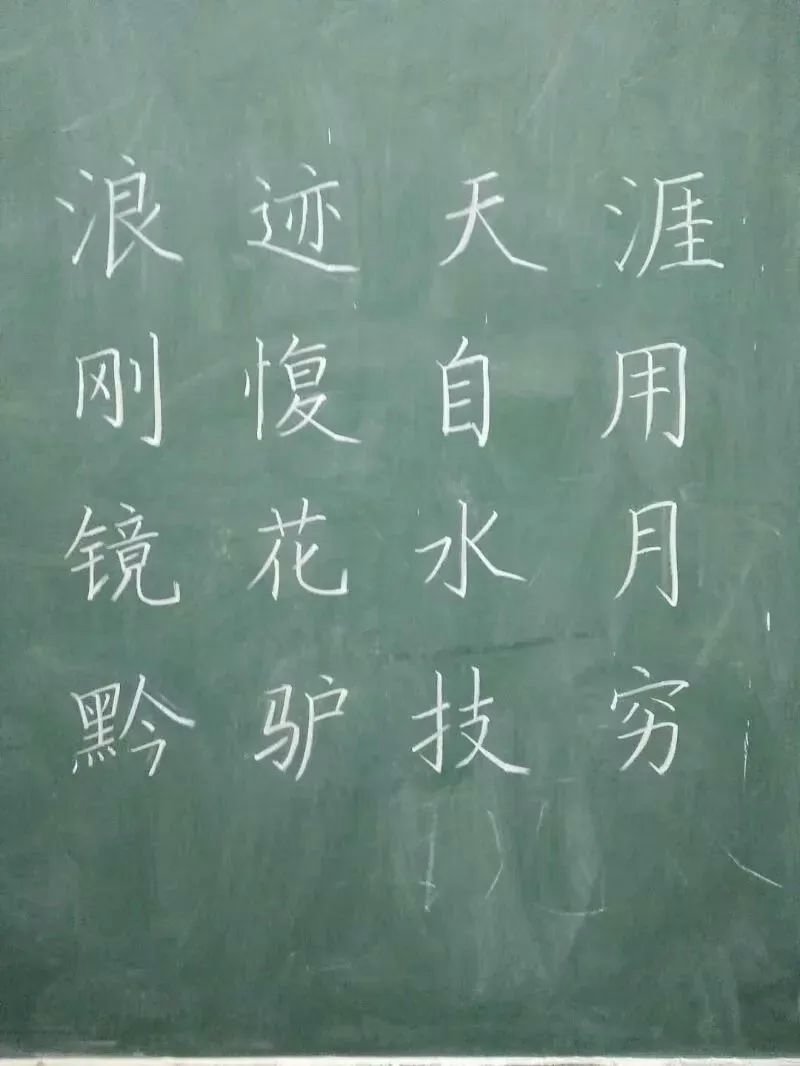
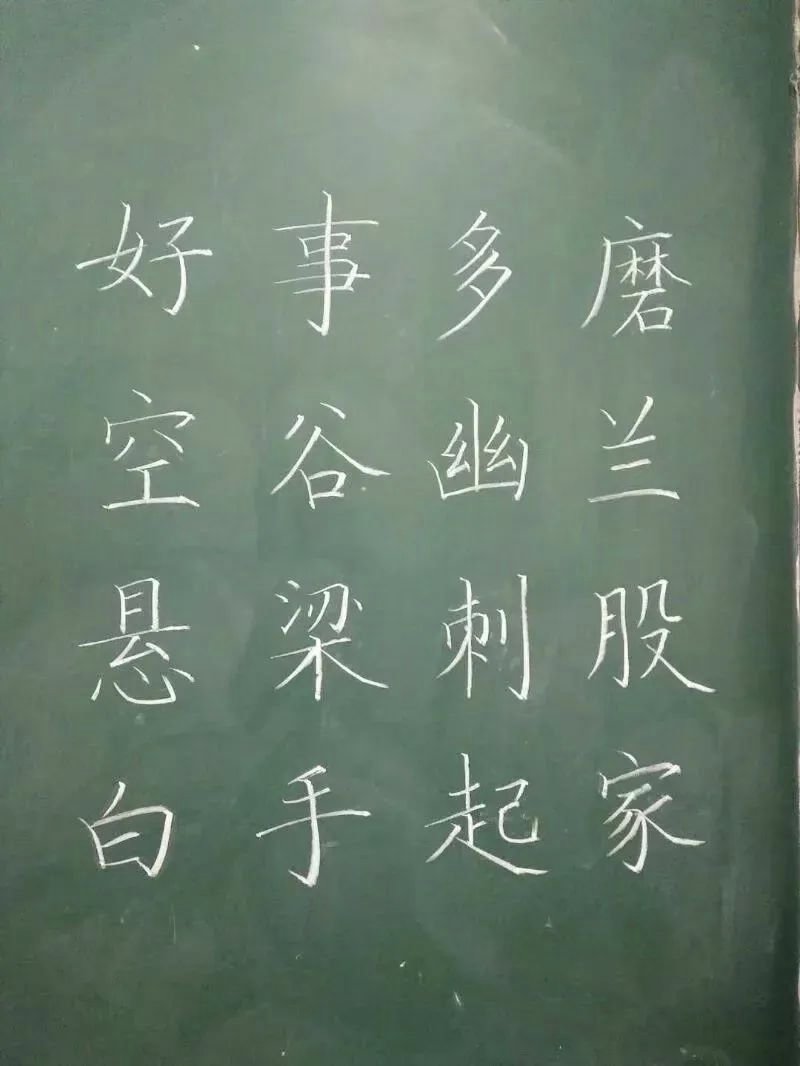
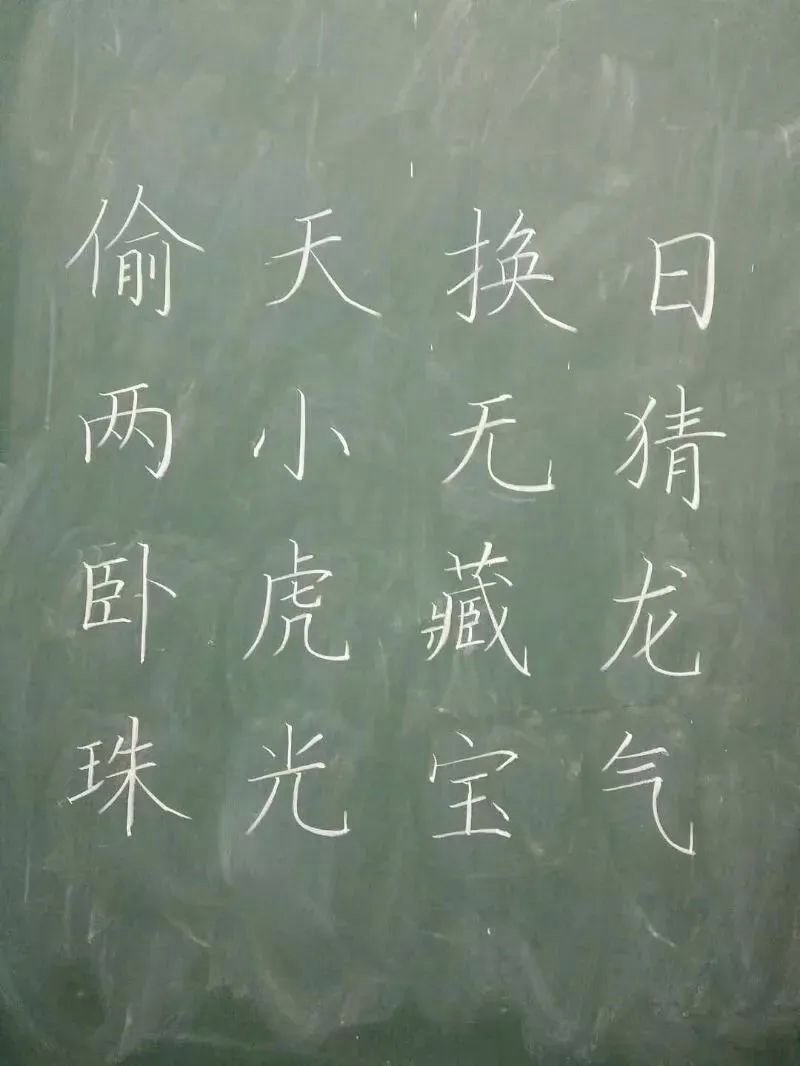
2. Five-character practice
After practicing the four characters for a while, I practiced the five characters. The principle is the same as the four-character exercise, but the five-character exercise is more difficult. The layout of the five-character exercise is a little more difficult than that of the four-character exercise. As long as you pay attention to the even layout, moderate position, and alignment of top, bottom, left, and right, you can write it well.
In previous national primary school Chinese teacher literacy competitions, the contents written in chalk were all five-character ancient poems.
When writing, you need to keep your mind in mind, and at the same time visually check whether the horizontal and vertical rows are aligned, and whether the white space is appropriate. By perfectly combining the penmanship, calligraphy, and composition, you can write a beautiful chalk calligraphy.
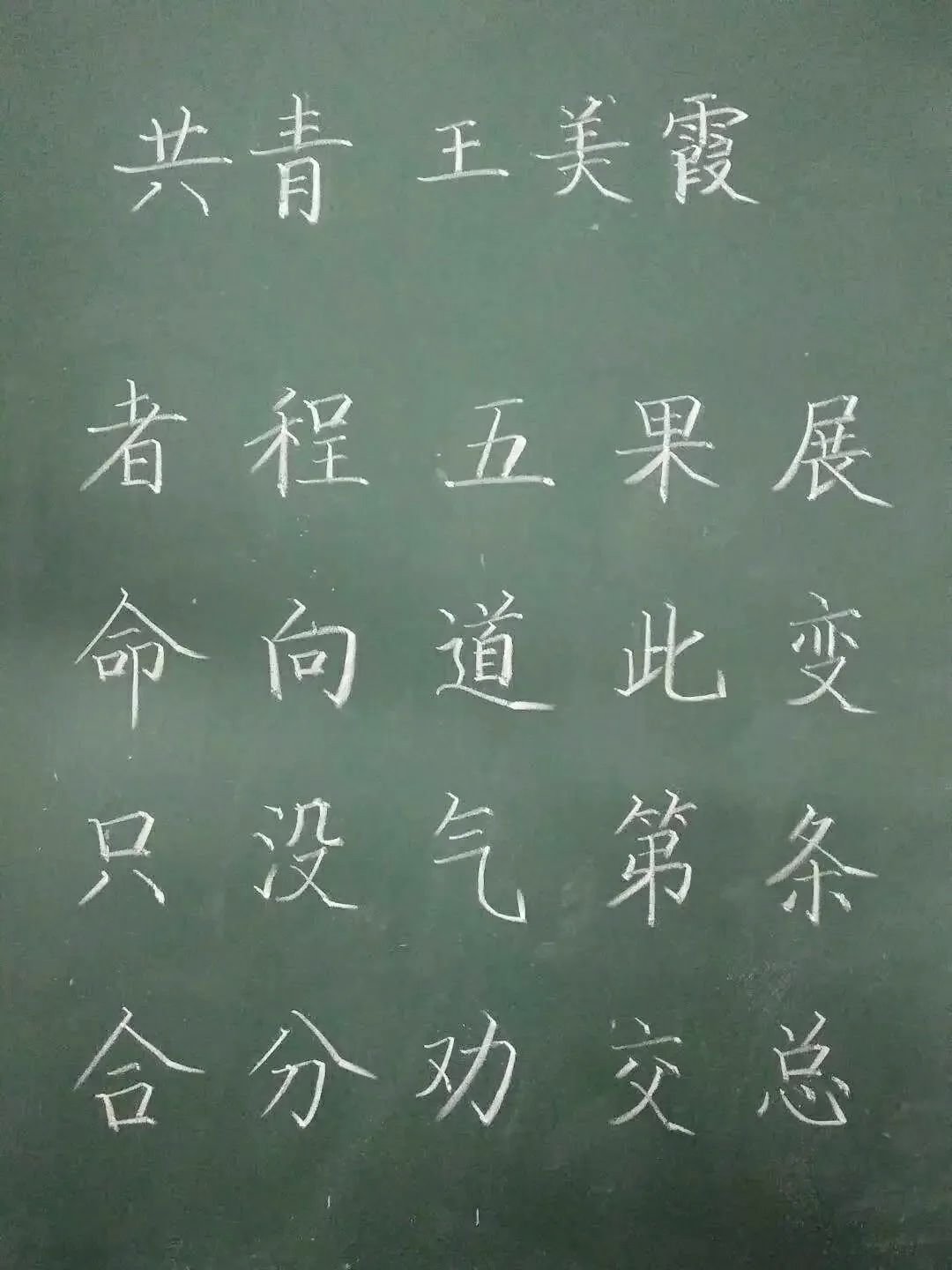
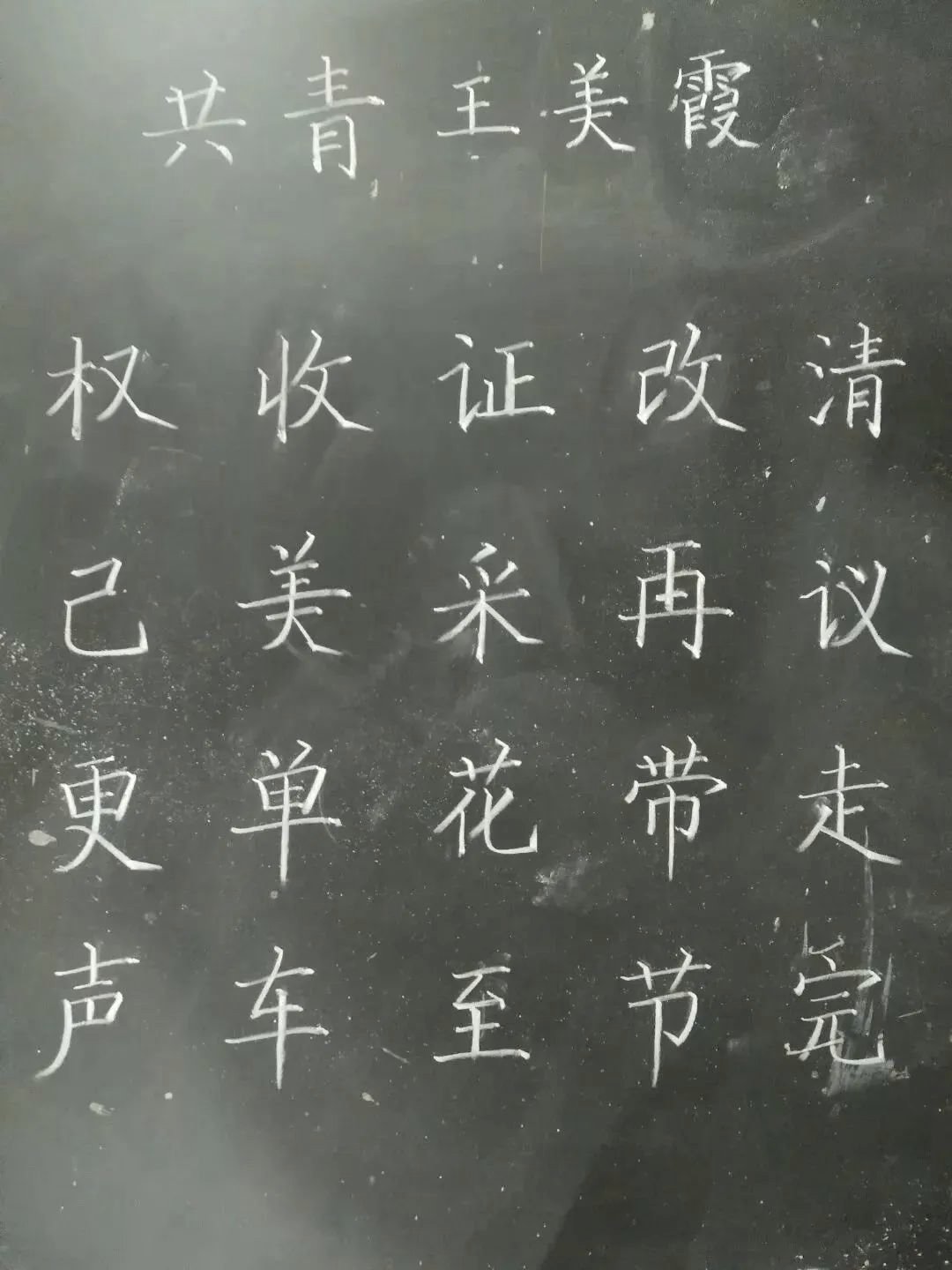
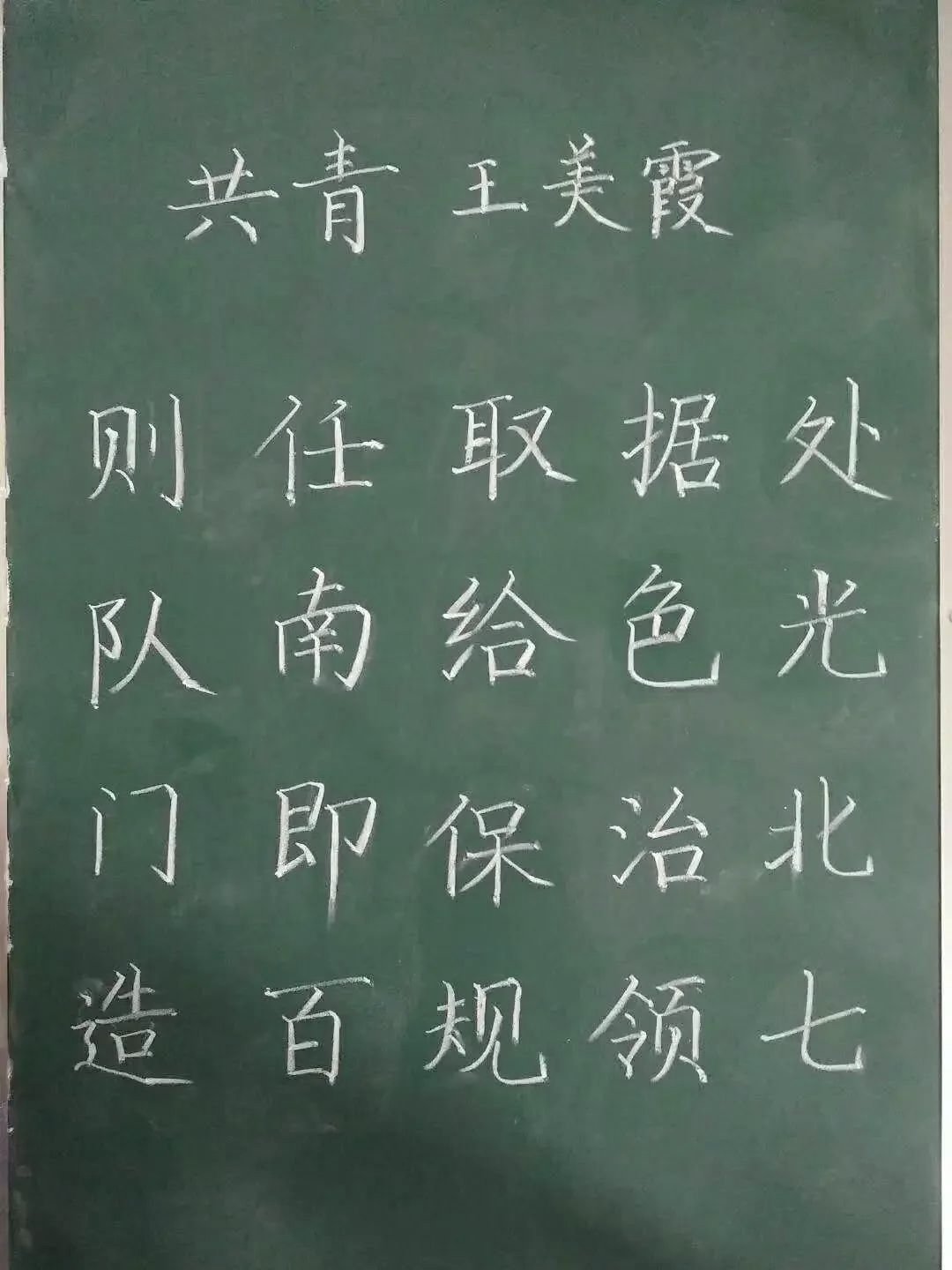
3. Post "The Biography of Laozi", "Album of Luohua Poems", "Ten Records of the Thatched Cottage", etc.
What is the purpose of posting? Everyone often brings their own personal habits when writing. Your handwriting may look good to you or to other people in general. In fact, in the eyes of experts, there are many small problems.
A classic copybook, the appearance, connotation and detail processing of the characters are all very mature. When making a copy, the closer I get to the copybook, the less problematic the handwriting will be.
Every word, every stroke, and the structure of every word must be improved through repeated copying and revision. It is very important to form brain memory through copying and form good writing habits.
When writing a post, write it down as carefully as possible. Arrange the composition from the outside to the inside first, pay attention to the coordination between words, and pay attention to the proportional relationship between the word spacing, line spacing and the area of the words themselves. It is not enough to just copy it once.
The structure of the characters must be handled properly and the writing techniques must be skillfully applied. Practice it over and over again to achieve the same results, and try to gain something from all three aspects: composition, calligraphy, and brushwork.
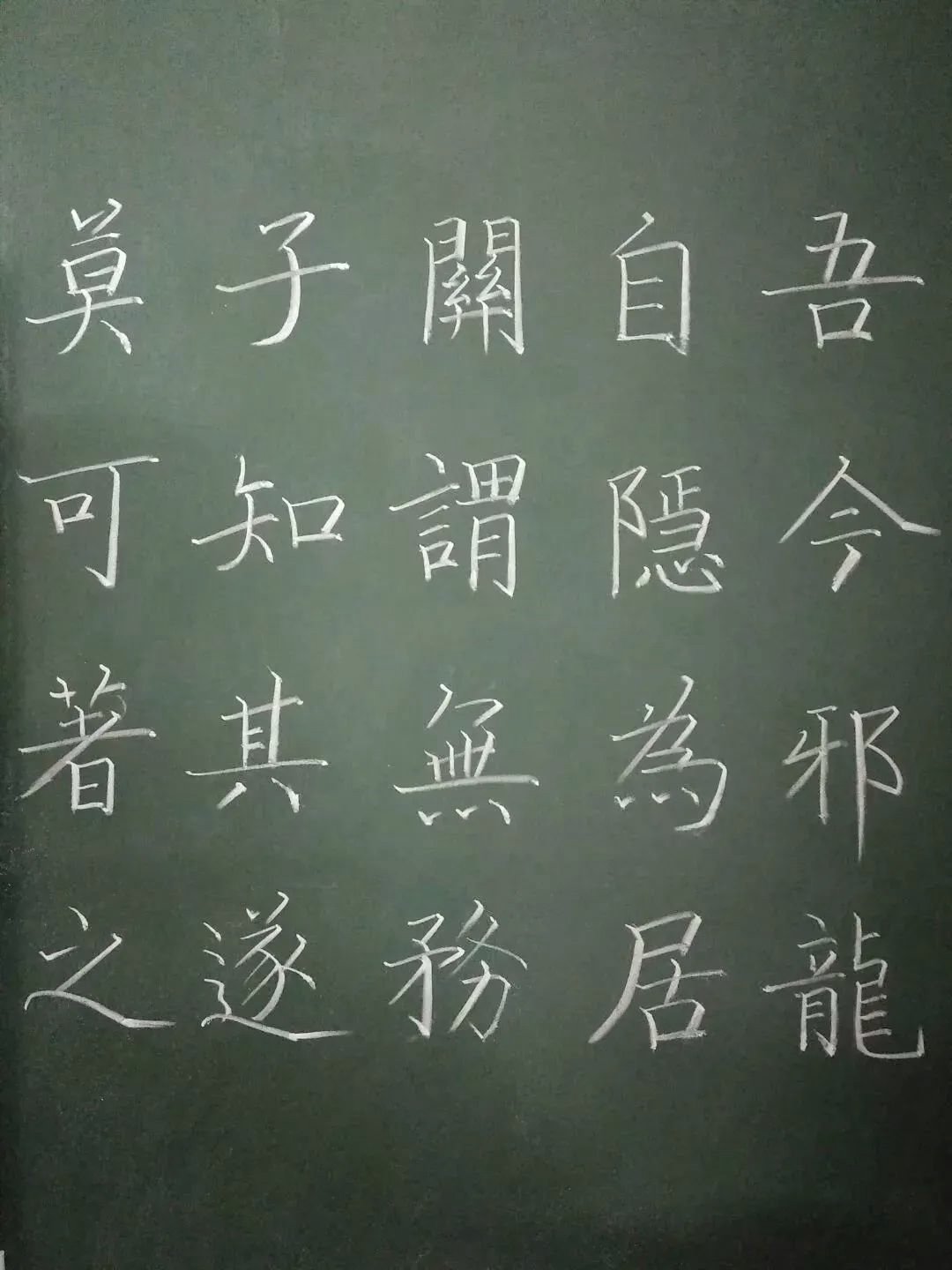
4. Practice of commonly used words
Finally, strengthen the practice of 500 commonly used words. There are tens of thousands of Chinese characters in total, but common characters are used very frequently. When practicing calligraphy, don’t focus on the number of words. Practicing each word a hundred times is better than practicing a hundred words once. Focus on quality.
Once you have practiced the commonly used words, you will basically have mastered the chalk calligraphy. Only when you are familiar with commonly used words can you apply them freely.
Practice for half an hour to one hour every day, and in four to six months, you can achieve the effect of "compact structure and standardized strokes" and reach the level of "very good calligraphy". Don’t stop midway and don’t give up suddenly.
Practice makes perfect, and you will be transformed.








